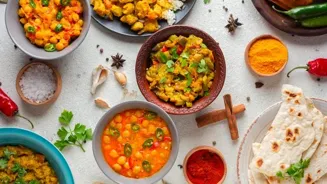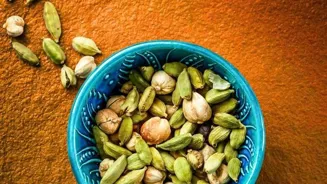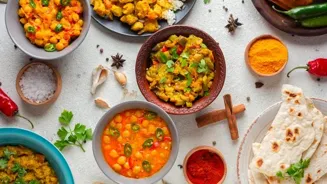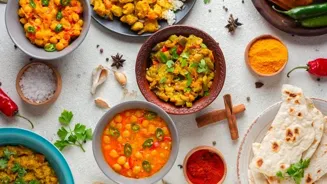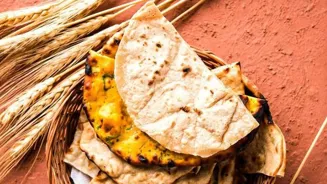Dive into the captivating history of Biryani, from royal origins to cultural evolution. Unveil the secrets behind this beloved Indian dish
Biryani, the very name conjures up images of fragrant rice, subtle
spices, and a dish that is fit for a king. However, the biryani we enjoy today, whether it’s a simple vegetable version or a more elaborate affair, has a rich and fascinating history.
It is a journey through empires, cultural exchanges, and culinary innovations. This article takes a peek into the biryani's origins, its evolution, and the reasons behind its enduring popularity here in India.
Let us go back in time and understand how this beloved dish managed to capture the hearts and taste buds of people all over our country. The story of biryani is not just about food, but also about culture.
Biryani's mysterious origin links to Persia, Mughal influence in India led to diverse varieties
The exact origins of biryani are shrouded in a bit of mystery and culinary debate. But, most historians agree that the dish likely originated in Persia or Central Asia. One popular theory links it to the Persian 'birinj biriyan' which translates to 'rice fried before cooking'.
The idea was that meat and rice were partially cooked separately and then layered together for final cooking. This method allowed for a deeper flavour infusion. It’s also believed that biryani made its way to India through the Mughal empire.
They were known for their love of fine food and often travelled with their cooks, who then would adapt regional ingredients. Over time, this process led to the birth of varied kinds of biryani which reflects the local tastes and ingredients found in different parts of our country.
These recipes adapted over generations.
Biryani evolved with Mughal empire, varied by region
As the Mughal empire expanded, so did the popularity of biryani. Royal kitchens became hotspots for culinary experimentation. Cooks added local spices, vegetables, and cooking techniques to the original recipes. This resulted in a diverse array of biryanis, each region having its own unique version.
For instance, Awadhi biryani from Lucknow is known for its slow-cooked method called 'dum pukht'. This involves sealing the pot with dough to trap the steam and aromas, resulting in incredibly tender rice and perfectly cooked vegetables.
Hyderabadi biryani, on the other hand, is quite spicy, it is known for the 'kacchi' biryani method. Here raw vegetables and rice are layered together and cooked on slow heat. This method gives a more vibrant flavor to the dish.
The Nizams of Hyderabad were known to be patrons of gastronomy, which helped the dish evolve.
Evolution of biryani reflects cultural exchange and adaptation
Biryani wasn't confined to the royal courts. It gradually trickled down to the masses, each household adapting it according to their budget and taste. Different communities added what they could.
Coastal regions, for example, might have used seafood and coconut milk in their biryani, while those inland would incorporate locally available vegetables and spices. The evolution of biryani tells a story of adaptation and cultural exchange.
This makes the dish truly Indian even though its roots lie elsewhere. What once was a royal dish, is now available at every corner. It is a testament to its universal appeal. Each version is a reflection of the local community and its unique culinary traditions.
Biryani: Evolving dish uniting Indians with diverse variations
Today, biryani is more than just a dish; it's an emotion for many Indians. From street-side stalls to high-end restaurants, biryani is available in countless variations. Vegetable biryani is a popular choice, with potatoes, carrots, peas, and paneer adding substance and flavour.
Some innovative chefs are also experimenting with ingredients like jackfruit and mushrooms to create unique and exciting versions of biryani. This reflects the constant innovation and adaptation that has characterised biryani's journey through history.
It constantly evolves, and also remains a comforting and familiar meal for generations of Indians. The popularity of biryani is also helping in uniting the country with a common culinary thread.
The journey of biryani: a culinary masterpiece uniting cultures
The story of biryani is a fascinating journey through history. It shows a unique mix of influence from Central Asia, Persia, and India. It is a reminder of how food can transcend borders and unite cultures.
From the royal kitchens of the Mughals to the bustling streets of modern India, biryani has truly stood the test of time. It continues to evolve, adapt, and delight food lovers of all backgrounds.
Whether you prefer a spicy Hyderabadi biryani or a flavourful Awadhi version, know that you're enjoying a dish with a rich and fascinating past. So next time you sit down to enjoy a plate of biryani, take a moment to appreciate the history behind it.
It is a culinary masterpiece that has been centuries in the making.
AI Generated Content. Glance/InMobi shall have no liability for the content